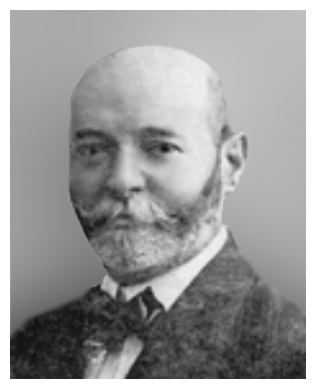
|
With Reb Leizer Tencer, a particular type was introduced to the Radomsker
community. He was of middle height, a Hasid, the owner of a large and beautiful
hotel and restaurant in Ferszter's house. However, his wife Miriam was occupied
with the restaurant and Reb Leizer was busy with the hotel and the buffet. His
guests were Polish lords and landowners, who kept their carriages in the nearby
inn.
Reb Leizer Tencer always was esteemed for his splendor and respectability. In his middle and later years, he was occupied with Kehile matters, was the synagogue warden for a long time and coworker in other community institutions. He sought the “golden middle” in everything, nothing too extreme, so that peace would reign.
Many rich Hasidim, who would come to the Rebbe for yom-tov, would be lodged in the hotel for the Days of Awe. Reb Leizer Tencer was a Hasid of the best kind, always ready to help with whatever he could and with whatever was needed. His wife, Miriam helped in many homes with warm food, clothing and other needed things.
 |
In 1906, Moishe Lewkowicz played at a wedding after Shabbos Nakhamu (the Sabbath of Consolation after Tisha B'Av). It was a few weeks after the beating of the heart of a Sar Vegodal b'Yisroel (leading figure among the Jews) had stopped. The moan that left the fiddler's heart cried with the great loss of the Jewish people. At that time in Vienna, the great Jew, Dr. Herzl, of blessed memory, was buried.
Six years later I again heard him play at a wedding. I was reminded of his moan
of six years before. I now understood the lamentable tones that had then torn
out of his fiddle. When he now played Hatikvah and Bemakom sham Arazim
(The Place of the Cedar Trees), it was easy to perceive that this was not a klezmer
playing for a ruble, but a fiddler who speaks, fantasizes and dreams about the future
of his people with a warm Jewish heart…
[Page 462]
I met him a third time in 1915. It was in the very fervor of the war, when the
optimists from Zionist camps were in despair with their ideals and thought that
the war would make a ruin of all that had been achieved in Eretz-Yisroel.
With such extinguished ideals, with such withering pessimism about Zion, I
met Moishe Lewkowicz and we spoke for a few hours. It is more accurate to say
that he spoke and a wonderful thing happened. The faith, the belief that had
withered in me for two years, the “holy light” about Zion was revived
and reignited in my heart by his persuasive words, by his naïve belief in
the great thing that will never again be extinguished.
(Undzer Zeitung, 22.1.1926, on the 5th Yahrzeit of
M. Levkowicz)
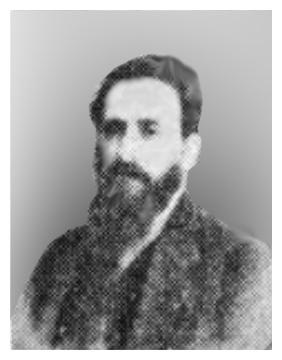 |
Dr. Y. Mitelman belongs to the figures who are in their actions and deeds so
deeply humane that the smallest contact with them is engraved in one's memory
for an entire life. His external serious countenance always shone with a kind
smile and ended with a finely cut angular beard. Dr. Mitelman would drop into
Reb Mikhael Melamed's kheder from time to time, because from him
he could receive the special “milk water” that he was famous for
that served as a good remedy for burns. Later it was known that remedy was
prepared according to the precepts of Dr. Y. Mitelman…
Dr. Mitelman was mobilized during the First World War as a doctor in the Czarist army.
When war covered the city, hunger and need began to penetrate more into poor Jewish homes and epidemics began to spread that took away many victims. Moishe Fiszhof, a devoted friend and student of Dr. Mitelman, then started to build a Jewish Epidemic Hospital (in the old wooden building on Przedborzer Street, in two small rooms).
When Dr. Mitelman came back from the front in 1917, he took over the direction of this hospital and with double energy began to organize the people's medical help for Jewish Radomsk. The hospital was later moved to a second, more appropriate location and was active under Dr. Mitelman's management.
At that time, Dr. Mitelman acceded to the request of the organized youth and
would appear each Thursday evening in the “workers' home” with a
lecture on medical-hygienic themes. This did not last long as Dr. Mitelman
became ill with typhus and, alas, did not get up from his bed again. The cruel
death that Dr. Mitelman fought in others cut short the life of a beloved Jew, a
wonderful person who faithfully served with his knowledge the widest strata of
the Jewish population in Radomsk.
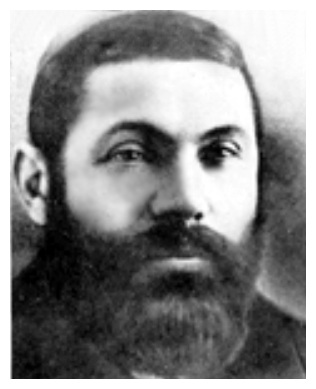 |
On the night before erev Yom-Kippur in 1914, when a group of Jews came in a horse and wagon from Częstochowa, they were detained on the Pławno road by a German Patrol and led to the City Hall. The German soldier on duty awoke the sleeping Polish clerk to see if he could identify them as Radomskers. The first words that the clerk said on waking from his sleep were, “Abramche niema.” Abramche is not here…
Reb Abramche was the model of a clerk. He knew exactly where one must search in the thick books, when the Zeide (grandfather) or the father was born, where he lived or when or where he had to submit for military conscription. In that respect, he literally was a “walking archive.” One could come to him at any time and if he was not found in the office, he was not upset if one came to him at home. He was always the good, polite and devoted Jew, ready to serve and help everyone.
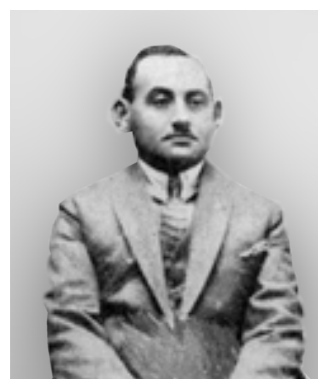 |
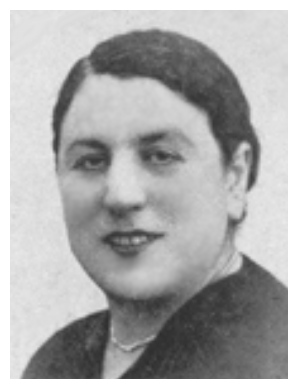 |
Guta Najkron, the wife of Haim-Benimin Najkron, born in 1897, was the daughter
of Meir Fanziker, one of the founders of the Ludzia factory in Eretz-Yisroel.
Despite her affluent, aristocratic ancestry and widespread family life, Guta
Najkron was dedicated completely to the social-philanthropic activities among
the broad masses in the city. She was active in the committee for Keren-Kayemet,
in the Sholem Alcheim Library and in almost all organizations and institutions.
Guta Najkron established the Zionist Women's Organization, WIZO, but categorically refused to be a presidium member. This trait of humility, modesty and reserve always accompanied her activities and way of life. In addition to the activities in the framework of organizations and institutions, she did important work privately and covertly. She distributed challahs on Shabbos to the poor, provided them with medical remedies, sent clothing and footwear, gave a few złotys, etc. Only individuals knew of her private contacts among the rich woman and the poor…
In her full splendor, Guta Najkron shone, too, in the dark day of the annihilation. Finding herself in the Piotrków camp, she cared for all of the unfortunate Jewish orphans who had lost their parents there as a mother cares for her own children. She hid a 5-year old girl, Ela Faszenskia an orphan who had lost both her mother and father, with her for the entire time and covered the girl many times with her own body when a special children's aktsia was carried out.
Guta Najkron died from want and hunger in the Bergen-Belsen Concentration Camp, on the last night before the liberation…
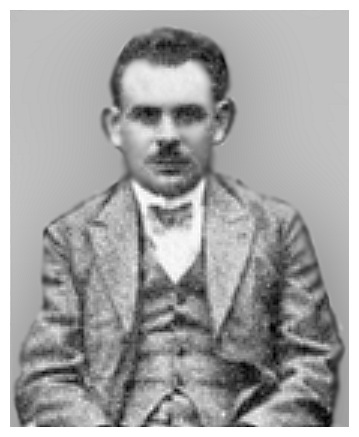 |
Engineer Poliwoda came to Radomsk as a teacher in the Yiddish gymnasium,
at the end of the First World War. He quickly became acquainted with the
general Jewish social life and particularly interested himself in the Jewish
youth who thirsted for knowledge both in the Jewish and general culture.
Engineer Poliwoda helped greatly with his papers and lectures that always made a hit with their national and cultural contents. He was versed in the rich gallery of Jewish cultural creativity in Western Europe and the young benefited greatly from his knowledge in all fields.
After becoming the son-in-law of a Radomsker, he rose in status materially, but did much for communal and cultural life. He was a representative of the artisans on the City Council, the bank and other communal institutions.
Hebrew text to be translated
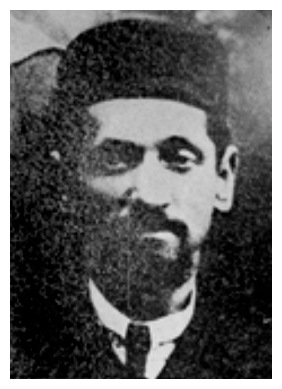 |
Mendel Fajnzilber died in March 1930. He was one of the first pioneers, who
built a road among the thorns and stones for the revival of the Jewish people.
He was among those who with one hand did their work and with the other held
their weapon, who with one hand together with others developed the Zionist Idea
and with the other hand eliminated the persecution of the clique that
persecuted him without pity and caused him personal pain and hurt. Yet, he
remained in the struggle for the Zionist ideal.
He occupied the office of Education Minister in the Zionist Beis-Yakov for years. As an adherent of the Enlightenment and a sage he spread the spiritual teaching of Zionism to every twilit area of the Jewish quarter.
In his last years he was estranged from active Zionist work. This is the personal tragedy of thousands of the first dreamers and fighters who were estranged from active work when Zionism became a reality. However, he left behind a rank of young people and students who followed the Zionist road that he had shown them.
Breindele Rapaport was from the select Jewish women who in addition to their
house and family were always occupied with those in need. She did not wait
until it was pointed out to her that a woman was going to give birth and it was
necessary to prepare not only for the newborn child, but also for the mother
and for the home itself. Breindele knew very well in which respectable Jewish
house cooking was done on Shabbos and yom-tov – no
matter… She knew and brought help.
Breindele Rapaport always had time to listen to requests for interest-free loans from poor merchants and craftsmen in her home. She also knew those who did not have enough courage to come to her at home; she went to them and helped with whatever was needed. The social work was never too much for her. She always carried on this work with a special smile.
Breindele Rapaport had time for everything, visiting the sick, comforting mourners, particularly widows. This refined and pious woman always had an appropriate word for every sufferer and provided the needed help for every one in need. By herself, she almost represented a social communal institution in the best sense of this concept.
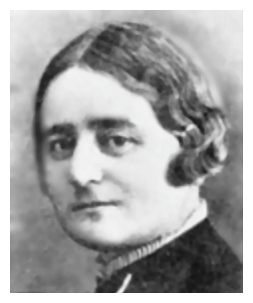 |
Hebrew text to be translated
Reb Yosef Szac, the owner of the writing materials shop, was himself an institution. A synagogue warden of the old style; different from later synagogue wardens of the Kehile. True, there were also efficient and devoted people (Dovid Bugajski, Leizer Tencer, Fishel Dunksi and others) among the later synagogue wardens. However, none of them was as popular and so supportive of the “plain” people as Yosef Szac.
During a conflict that broke out between the students in the government school (Szandowki) and Golomb, the students decided to organize a “strike” and to go to Yosef Szac's business to demonstrate, in order to enlighten him, the synagogue warden, with the actions of the teacher and to seek help from him against their grievance. Reb Yosef, with his beautiful grey beard, thoughtfully listened to the complaints, calmed the students and told them to go back to school. He would take care of the matter with the teacher.
Reb Yosef sat near the rabbi in the Beis-Midrash, near the eastern wall. He looked particularly joyful during celebrations of the birthdays of the Russian emperor and his family, or when he stood near the mayor who wore a Napoleanic hat adorned with a gold edge. The mayor represented the city and Reb Yosef Szac, the general Jewish population.
Reb Yosef also filled a number of official functions in the city. If a Jew received money in the mail, the pink “notice” had to be certified. If a son or a brother was abroad and could not appear for conscription, his father or brother was punished with a fine of 300 rubles, which had to be paid at city hall. In such a case, Reb Yosef Szac, as synagogue warden, and Gabrial Goldberg as special Jewish representative, had to sign that the person challenged was not able to pay. If a close relative died and Reb Mendl Faierman, the gabbai of the Khevra Kadishe, could not immediately take care of the grave, one ran to the synagogue warden, Reb Yosef Szac.
It was rare that someone would know where to find the Kehile meeting place. Therefore, everyone knew Reb Yosef Szac's store and the writing desk in which was found the large round “seal,” the seal of the synagogue warden.
Reb Yosef Szac belonged to the community workers of the old generation who
brought with their kindness a ray of light to the gray day-to-day life of the people.
Hebrew text to be translated
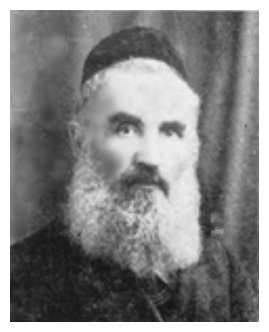 |
Translated by Gloria Berkenstat Freund
Henekh Alpert (The Melamed)
I remember Reb Henekh, the Przedborzer Melamed, for two reasons. The first is because of his beautiful daughter Yentl, who worked in my father's sock factory where she was the forewoman of the business. She had the nickname the “Princess”; she was thus crowned because of her beautiful stately appearance. The second reason for my memories of Henekh the Melamed is that in his deep old age he became my step-grandfather.
I still see him clearly before my eyes, a tall person with his back bent a little, a long, beautiful, combed grey beard, with bags under his grey eyes. He was always pensive, absorbed in the other world, the better, eternal one.
Henekh, the Przedborzer Melamed, as we would call him, came from the shtetl of Przedborz and from good lineage. He was the first cousin once removed of the Tiferes Shlomoh's rebbitzin, Gitele, and was a constant visitor in the Noworadomsker Rebbe's court. It was, however, Henekh's luck to become a melamed; he taught Gemera students and many of the teachers of the youngest children in Radomsk would come to him on Friday nights to study the Torah portion of the week.
My childish mind absorbed those divine notes of the Gemera for eternity. I was then eight or nine years old when Yentl would take me with her to her parents' home. At night she would open the bunk bed that was the bed for both of us and I was content to go to sleep. A strange bed in a strange house always enticed me. My “wander-blood” already boiled during my childhood. If I had somehow been offended, my mother could not make it up to me with candy, chocolate or even a doll… She would only have to promise me that I would spend the night in someone's home or visit a family and I immediately became happy, jubilant.
My mother would complain that other children of my age would clasp their mother's apron, “But not my daughter. 'Something not good' must be sitting in her. Give her a suitcase, a horse and wagon, and 'We're off.'”
One of my favorite houses then, besides my mother's house, was the house of the Przedborzer Melamed's. I remember how at dawn when the streaks of grey light of the rising sun would break through the shutters – such heartfelt voices of the Gemera students would carry from the study room and above all the others one could hear the voice of their rebbe. I would then snuggle deeper into the featherbed, edge closer to Yentl's warm body and be lulled into a deep, sweet sleep.
There was also a sort of inn at Henekh's for Jews who came to collect money for Eretz-Yisroel. They would eat, drink and sleep in his house and he was happy to fulfill the mitzvah of tzadekah (commandment of giving to charity). His greatest dream was to settle in Eretz-Yisroel and that for over one hundred years, his bones would rest in the Holy Earth. It very often happened that cunning beggars took advantage of his good Jewish heart. As long as they told him that they were collecting money for Eretz-Yisroel, they became guests in his free inn…
The Przedborzer Melamed lived near Otskowsk in the court and the Rozprzer shtibl was also there. When his wife died, he was broken and alone; only the dream of living to reach the holy earth of Eretz-Yisroel kept him alive. Now the story of how Reb Henekh Melamed became my step grandfather.
My Grandfather Yokhanan, who was a great scholar and the oldest gabai
in the court of Reb Yekhezkele Radomsker, also had a dream of settling in
Eretz-Yisroel. However, because of his poor health which came from fasting
every Monday and Thursday, he had to give up his dream.
[Page 468]
However, my Grandmother Haya who was a strong, firmly built woman and the
principal breadwinner, could not on any account part with the dream to set foot
on the earth of the Holy Land. She strongly pampered her husband, smeared
his weak body with salves, gave him various herbs to drink, cooked broths
for him. However, it did not help and after a longer illness he died and my
grandmother was left a widow in her old age.
A year after my grandfather's death, my grandmother married Henekh Melamed. The principal dowry that she gave to him was the promise that she would go with him to Eretz-Yisroel… Four weeks after the marriage, they left Noworadomsk (half the city accompanied them at that time to the train station). They also fantasized and made plans to bring their married children and grandchildren to Eretz-Yisroel.
However, after six months in Eretz-Yisroel, Henekh Melamed died (1914). A year later my grandmother went on the eternal path, too. But their great dream to rest in the Holy Land of the Patriarchs was realized (they rest on Har Hazeitim [Mount of Olives]). Their children did not live to make aliyah. However, his and her grandchildren are in Israel.
Hebrew text to be translated
He was known in the city as Kopel Shamas and was beloved by everyone. He was known not only because he was a sage, but because he was a “politician” and a “strategist.” The entire city knew that in the First World War Kopel “directed” the strategy in the large Beis- Midrash… Outside, of course, snow was falling, the frost had frozen the windows. But in the Beis-Midrash there was a nice warmth. Jews actually stood and warmed themselves at a warm oven and listened to Kopel's “strategy”… When Hindenburg's Army marched through Radomsk, Kopel revealed with certainty which front the Germans would assault and he was actually correct…
However, Kopel was not only a “strategist,” but also a devoted “Lover of Zion.” When the first bonds from the Jewish Colonial Bank for Eretz-Yisroel appeared in Radomsk, Kopel campaigned that they should be bought. He also campaigned for Keren Kameyet L'Yisroel. Thanks to Kopel, among the other plates put out in his Beis-Midrash on Erev Yom-Kippur, there were also plates for the National Fund (in other prayer houses at that time this was prevented). Courage and willingness were needed in his time to advocate and be engaged for Eretz-Yisroel and only a few people did this. Kopel Shamas was one of the few.
Every evening, between Minkhah and Maariv, seeing a cluster of “dreamers” in a circle, he read Hatzfire aloud to them. He came to shul dressed in his Shabbos clothing and beamed with joy on the day of the University opening in Jerusalem.
Kopel Glidman died on Pesakh 1929 at 70 years of age. Several thousand people and the rabbinate with the Amshinower Rebbe at the head attended his funeral, which took place at the end of Pesakh.
Hebrew text to be translated
|
JewishGen, Inc. makes no representations regarding the accuracy of
the translation. The reader may wish to refer to the original material
for verification.
JewishGen is not responsible for inaccuracies or omissions in the original work and cannot rewrite or edit the text to correct inaccuracies and/or omissions.
Our mission is to produce a translation of the original work and we cannot verify the accuracy of statements or alter facts cited.
 Radomsko, Poland
Radomsko, Poland
 Yizkor Book Project
Yizkor Book Project
 JewishGen Home Page
JewishGen Home Page
Copyright © 1999-2026 by JewishGen, Inc.
Updated 19 Aug 2021 by OR